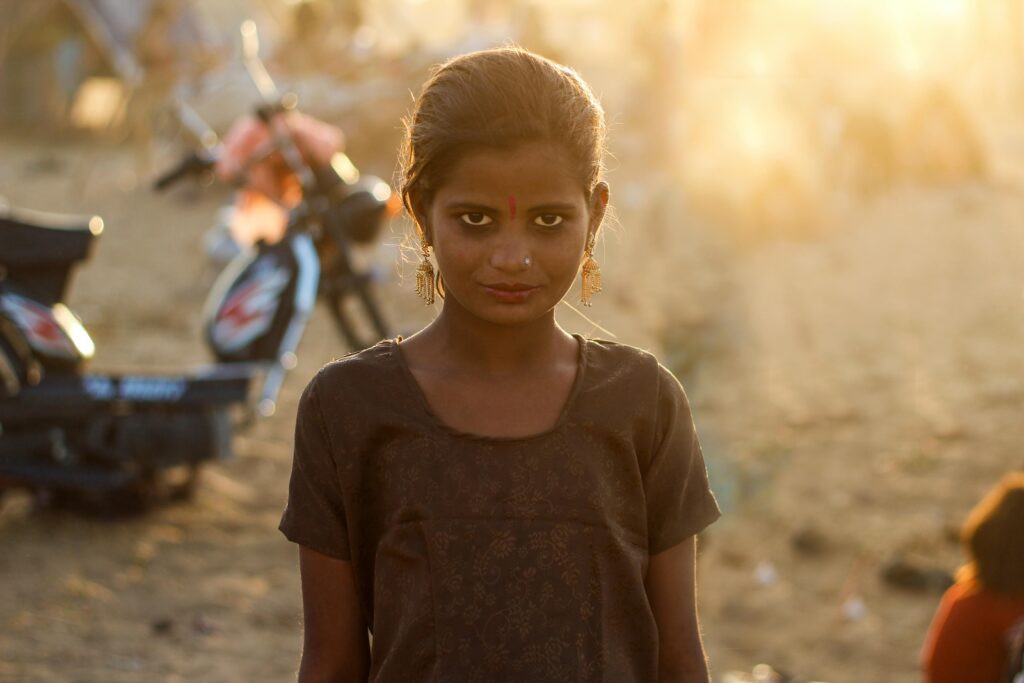Child marriage remains one of the most pressing issues facing girls in India today. Despite legislative measures and concerted efforts by non-governmental organizations (NGOs), the practice persists, deeply rooted in socio-economic and cultural factors. This blog delves into the causes, consequences, and potential solutions to eradicate child marriage in India, highlighting the importance of collective action.
The Root Causes of Child Marriage in India
Socio-Economic Factors: Poverty is a significant driver of child marriage. Families struggling with economic hardship often view marrying off their daughters early as a way to reduce financial burdens. Dowry, a traditional practice where the bride’s family provides gifts and money to the groom’s family, exacerbates this issue. Younger brides typically require smaller dowries, making early marriage a seemingly attractive option for impoverished families.
Cultural Norms and Traditions: In many communities, child marriage is deeply ingrained in cultural and religious traditions. It is seen as a means of preserving family honor and ensuring the purity of girls. Additionally, traditional gender roles that prioritize marriage and motherhood for girls over education and personal development perpetuate the practice.
Lack of Education: Education plays a crucial role in delaying marriage. However, many girls in rural and impoverished areas have limited access to education. When girls are not in school, the likelihood of early marriage increases. Educated girls are more likely to be aware of their rights and have higher aspirations for their future, leading to delayed marriages.
The Devastating Consequences
Health Risks: Child brides are often forced into early pregnancies, which pose significant health risks. Adolescent girls are more likely to experience complications during childbirth, resulting in higher maternal and infant mortality rates. Additionally, young mothers are often unprepared for the physical and emotional demands of motherhood.
Educational Disruption: Marriage often marks the end of a girl’s education. Once married, girls are typically expected to focus on household duties and child-rearing, leaving no room for further schooling. This perpetuates the cycle of poverty and limits their opportunities for personal and professional growth.
Psychological Impact: The transition from childhood to adulthood is abrupt for child brides, leading to psychological trauma. They often face isolation, domestic violence, and a lack of autonomy, which can result in long-term mental health issues.
Efforts to Combat Child Marriage
Legislative Measures: India has implemented laws to combat child marriage, such as the Prohibition of Child Marriage Act, 2006, which sets the legal age of marriage at 18 for girls and 21 for boys. However, enforcement remains a challenge, particularly in rural areas where the practice is most prevalent.
Education Initiatives: Promoting education for girls is crucial in the fight against child marriage. Government and NGO initiatives focus on improving access to quality education, providing scholarships, and creating safe learning environments. Educated girls are more likely to delay marriage and pursue careers, contributing to their families’ and communities’ development.
Community Engagement: Changing deeply entrenched cultural norms requires community involvement. Grassroots organizations work with local leaders, parents, and youth to raise awareness about the negative impacts of child marriage and promote gender equality. By involving the community, these initiatives foster a supportive environment for change.
Economic Empowerment: Programs aimed at economic empowerment for families can reduce the economic incentives for child marriage. Microfinance schemes, vocational training, and income-generating activities provide alternative means of financial support, making it less likely for families to resort to early marriage as a solution to poverty.
The Way Forward
Eradicating child marriage in India requires a multifaceted approach that addresses the underlying socio-economic and cultural factors. It demands sustained efforts from the government, NGOs, and the community to ensure that every girl has the opportunity to grow, learn, and thrive. By prioritizing education, enforcing laws, and promoting gender equality, India can pave the way for a future where child marriage is a relic of the past.
The persistence of child marriage underscores the need for continued vigilance and action. Only through collective efforts can we hope to break the cycle and secure a brighter, healthier future for the girls of India.







